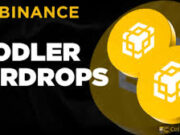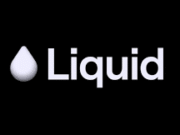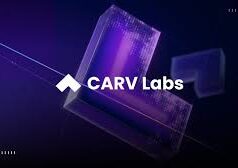The blockchain world just got a serious jolt of energy. In October 2025, Plume Network—a fast-growing leader in real-world asset (RWA) tokenization—officially announced its acquisition of Dinero Protocol, a compliant liquid staking platform widely respected in the institutional crypto scene. This isn’t just another merger; it’s a signal of how fast DeFi’s grown-up era is unfolding.
According to Blockworks, this integration isn’t a surface-level partnership but a deep fusion of Plume’s RWA ecosystem and Dinero’s yield-generation engine. The result? A one-stop financial powerhouse where users—retail or institutional—can stake, trade, and manage tokenized real-world assets seamlessly.
Plume Network: Redefining the RWA Frontier
Born from the lessons of the post-FTX crypto reset, Plume Network was designed specifically to bring institutional-grade tokenization to DeFi. It’s not your average EVM-compatible chain—it’s an infrastructure-first blockchain where compliance, speed, and transparency intersect.
As reported by Messari, Plume’s total value locked (TVL) recently hit around $294 million, with real-world assets accounting for over $179 million, growing by 15% in the last month. The network supports everything from private credit funds and renewable energy projects to tokenized U.S. Treasuries, effectively bridging TradFi yield and DeFi composability.
Even The Defiant notes that Plume’s tokenization engine gives investors fractional access to real assets—making it possible to invest in high-yield credit or infrastructure projects directly from their DeFi wallets.
And in a landmark move, as confirmed by CoinDesk, Plume received SEC approval on October 1, 2025, to operate as a registered transfer agent. This step allows Plume to handle tokenized securities legally within the U.S., connecting with legacy financial systems like the DTCC settlement network. It’s the bridge between Wall Street’s structure and Web3’s speed.
“Plume is leading a large institutional push across the U.S., Asia, and the UAE,” said co-founder Teddy Pornprinya, in an interview with Blockworks.
Strategic partnerships are already stacking up. According to Bitget Research, Plume collaborates with TrueFi for tokenized credit and Midas for yield-bearing T-bills—further proof that Plume’s vision is to unify traditional assets and blockchain finance under one compliant layer.
Dinero Protocol: The Staking Engine Institutions Trust
On the other side of this deal stands Dinero Protocol, a name synonymous with compliant liquid staking. Dinero’s flagship product, ipxETH, represents staked Ethereum that’s liquid, transferable, and regulatory-friendly.
Per The Defiant, ipxETH already commands $125 million in TVL, supported by major partners like Galaxy Digital and Laser Digital, the digital asset arm of Nomura Bank. These collaborations show Dinero’s credibility among high-capital institutions seeking secure yield products.
Dinero also supports pxSOL (for Solana) and pxBTC (for Bitcoin), expanding across eight different blockchains, according to CoinDesk. This multi-chain model enables flexible staking across ecosystems while ensuring liquidity for users who want to trade, lend, or collateralize their assets.
Liquid staking, for those unfamiliar, lets users earn yields (often 3–7% APY) on staked crypto without locking up their tokens. As Messari reports, Dinero’s secret sauce lies in its KYC/AML-compliant architecture, a safeguard that keeps it in the SEC’s good graces while providing scalability for institutions.
DeFi builders praise Dinero’s uptime and audit transparency, while Blockworks highlights that Galaxy and Laser Digital use Dinero in tokenized fund structures—a strong sign that it’s trusted by multi-billion-dollar players.
The Acquisition: When Staking Yields Meet Tokenized Assets
According to Blockworks, Plume’s acquisition of Dinero brings the two ecosystems under one roof. Dinero’s assets—ipxETH, pxSOL, and pxBTC—are becoming native tokens within Plume’s ecosystem, effectively merging staking and RWA infrastructure.
Now, a user can stake ETH, receive ipxETH, and immediately deploy that asset as collateral for tokenized credit funds or trade it for yield-bearing RWA baskets. No bridges. No chain-hopping. No friction.
In a CoinDesk interview, Pornprinya explained,
“What we wanted to do with the Dinero acquisition was to open up our product suite to onboard all types of institutional users.”
This move coincides with Boston Consulting Group’s projection that RWAs could represent $16 trillion in on-chain value by 2030—a figure that Plume clearly aims to dominate.
The acquisition also brings Dinero’s engineering team and LST (liquid staking token) architecture in-house. According to Bitget Research, this could push Plume’s TVL beyond $500 million by early 2026, combining RWA and staking liquidity for an entirely new yield layer.
Community reaction has been overwhelmingly positive. The Defiant reports that DeFi analysts are calling it the birth of the “RWA + Yield Flywheel”—a self-reinforcing ecosystem where tokenized assets and staking returns fuel each other’s growth.
Why This Merger Is a Game-Changer for Institutional Crypto
This deal does more than make headlines—it represents a paradigm shift. RWAs have always promised stability, while staking offered yield. Combining both unlocks the most powerful formula in institutional DeFi.
As Blockworks explains, this kind of composability means an institution can stake ETH, receive ipxETH, and then deploy it in Plume’s credit markets or RWA-backed lending pools—earning layered, regulated yields in a single ecosystem.
For institutional investors like Fidelity, State Street, or Galaxy Digital, this integration removes the biggest barrier: compliance. Instead of risky, unregulated yield farms, they get audited, KYC-compliant, and SEC-cleared products—without sacrificing blockchain transparency.
Retail and DeFi users, meanwhile, enjoy full flexibility. As The Defiant highlights, users can lend, trade, or reinvest ipxETH for multiple yield streams—all from one dashboard.
The merger also raises the bar for competitors like Ondo Finance and Centrifuge, who may need to rethink how they deliver compliant yields. According to CoinDesk, regulators are closely watching hybrid models like this as potential frameworks for future crypto yield approval.
Looking Ahead: Plume’s Next Moves
Fast-forward a few months, and the Plume–Dinero ecosystem is expected to evolve into a financial hub unlike anything else in Web3. Bitget Research predicts the launch of auto-compounding RWA vaults, where staking rewards flow directly into tokenized bonds or credits, maximizing real yields.
New integrations with TrueFi for on-chain credit and Midas for Treasury-backed products are already in the works, strengthening Plume’s institutional appeal. With its SEC approval, RWA pipeline, and Dinero’s staking infrastructure, analysts expect Plume’s TVL to surpass $1 billion by the end of 2026.
Of course, challenges remain—such as ensuring smooth integration and maintaining DAO stability—but Plume’s compliance-first approach gives it a strong regulatory cushion.
As The Defiant concludes, this marks the rise of “RWAfi”—the fusion of real-world assets and DeFi yields into a new financial category defined by transparency, liquidity, and real performance.
Conclusion: A Defining Moment for Web3’s Institutional Era
Plume’s acquisition of Dinero isn’t just an expansion—it’s a statement. It proves that blockchain can handle big money responsibly, marrying institutional compliance with DeFi innovation.
For builders, it’s an invitation to build on Plume’s secure infrastructure. For investors, it’s a green light to enter a regulated, yield-bearing ecosystem that respects traditional finance’s rules while breaking its limitations.
In short, the RWA revolution just evolved—and thanks to Plume and Dinero, it now comes with yields worth watching.
Cited & Verified Sources
- Blockworks – “Plume Acquires Dinero to Merge RWA and Staking” (2025)
- CoinDesk – “Plume Gets SEC Approval as Registered Transfer Agent” (October 2025)
- Messari – “Plume Network Metrics and Ecosystem Growth” (2025)
- The Defiant – “Liquid Staking Meets RWAs: The Next DeFi Flywheel” (2025)
- Bitget Research – “Plume’s Institutional Expansion and Funding Rounds” (2025)
- Boston Consulting Group – “Real-World Asset Tokenization Could Hit $16T by 2030” (2024)



























